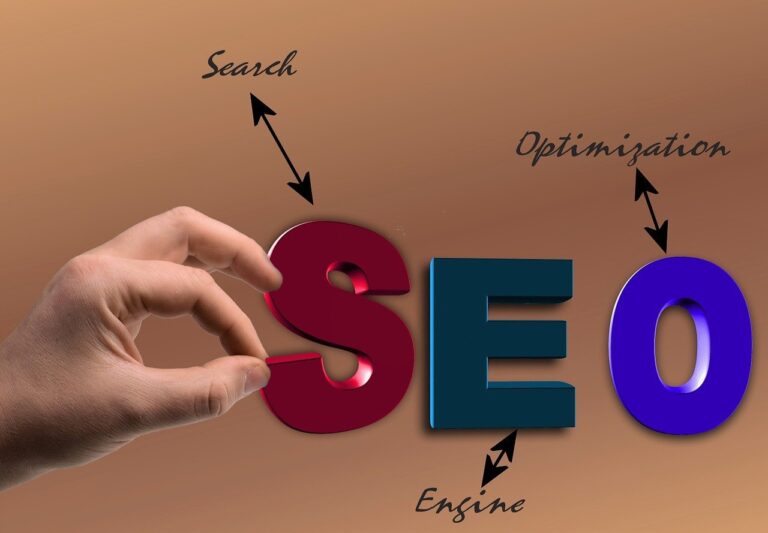Key Takeaways
- A successful B2B e-commerce SEO strategy requires a well-planned, holistic approach that encompasses keyword research, on-page optimization, technical SEO, and backlink building.
- Continuous monitoring and analysis are crucial to adapt strategies and achieve sustained improvements in search rankings and organic traffic.
- Aligning SEO efforts with business objectives ensures that the campaign contributes meaningfully to overall growth and success.
SEO for B2B e-commerce helps to make your brand a go-to resource for other businesses. You want to create a website that speaks directly to decision-makers and influencers in your industry and optimize your e-commerce platform so it not only ranks well, but also delivers real value to those who matter in your target market.
It’s more than securing top rankings. You need to build an authoritative online presence that provides meaningful and relevant content. This means making sure the right product pages pop up for the right queries, increasing relevance, and meeting customer intent head-on. By tailoring your SEO strategies to align with what your audience is actually searching for, your brand will not only stand out in competitive markets but also engage key players and build trust, which is crucial for long-term business growth.
In this guide, you’ll find a solid framework to master B2B e-commerce SEO. We’ll equip you with effective strategies to establish a commanding online presence, position your business as a recognized leader in your industry, and boost your online sales.
What Makes B2B E-commerce SEO Unique?
B2B e-commerce SEO is a whole different game from your usual SEO tactics. Here, you're not just looking to draw in clicks – you need a strategy that understands the complexities of longer sales cycles, caters to various stakeholders, and handles high-stakes transactions. This kind of SEO zeroes in on niche audiences, aims to top the charts for industry-specific keywords, and delivers content that informs but also builds credibility. These unique challenges are key to grasping the ins and outs of B2B e-commerce and steering your strategy to success.
This complexity comes from a few key factors:
- Longer sales cycles: B2B buying isn’t quick or simple. It often involves deep research, multiple touch points, and extended negotiations. Effective SEO content should shepherd prospects through every phase of this journey, from the initial discovery to the final decision, building trust and credibility at each step.
- Multiple stakeholders: Decisions in B2B scenarios aren’t made in isolation; they typically involve teams that include everyone from executives to procurement specialists and technical advisors. Your content needs to speak to each group's unique priorities and concerns, helping to align them and push the buying process forward.
- In-depth information: B2B buyers look for detailed technical specifications, comparative analyses, and solid industry insights to guide their choices. Offering this level of detailed content not only boosts your authority but also cements trust with your audience.
- Targeted niches: Precision is crucial in B2B SEO. You need to nail targeting, focusing on specific industries, roles, and their particular pain points. Your content must resonate deeply with these defined audiences to ensure your messaging hits home and addresses their specific needs and challenges.
By tackling these areas, B2B e-commerce SEO does more than boost visibility – it also forges meaningful connections with the right audience, driving high-quality leads and fostering sustainable growth.
Core Strategies for Winning at B2B E-commerce SEO
To really nail B2B e-commerce SEO, you need a well-crafted strategy that links each SEO move to your overall business goals. Let’s dive into the essential elements that make up the backbone of a successful SEO strategy.
1. Comprehensive Keyword Research
Keyword research is a gateway to understanding your audience. It provides vital insights into the terms they use at different stages of their buying journey.
- Prioritize keyword targeting: Strike a balance between short-tail keywords like “B2B e-commerce platforms” for broad visibility and long-tail keywords such as “affordable B2B e-commerce platform for wholesalers” to hone in on specific search intents and attract qualified leads.
- Leverage advanced tools and data insights: Use powerful tools like Google Keyword Planner, Ahrefs, and SEMrush to discover high-value keywords. Enhance this data with direct customer feedback to really grasp the language and priorities of your buyers, ensuring your content meets their expectations.
- Analyze your competitors: Dive deep into your competitors' keyword strategies to spot valuable gaps and opportunities. Identify high-performing keywords, note content shortcomings, and pinpoint low-competition terms to sharpen your approach and secure a competitive advantage.
Pro Tip: Tailor your keywords to match buyer intent at each stage of their journey. Use informational queries during the awareness phase and transactional terms when they're ready to make a decision.
2. Optimize On-Page Elements
On-page optimization is crucial for making your website both appealing to search engines and user-friendly. This key SEO component boosts user engagement and conversions, while helping search engines accurately gauge your site’s relevance, structure, and hierarchy for better rankings. Here’s how to get impactful results:
- Keyword-rich headlines and tags: Craft your H1 tags and meta descriptions to naturally include primary keywords and highlight your value propositions. These elements are essential for enhancing click-through rates and boosting your visibility in search results.
- Structured website architecture: Design your website with a clear and intuitive structure. Implement breadcrumb navigation, neatly organize categories, and minimize click depth to make navigation easier and enhance the overall user experience.
- Product and category pages: Make your product and category pages stand out by optimizing titles, descriptions, and images with relevant keywords. Add detailed product specifications and clear calls to action like “Request a Quote” or “Contact Sales” to encourage conversions.
- SEO-friendly URLs: Craft URLs that are short, descriptive, and include your target keywords. For instance, change “www.example.com/product123” to “www.example.com/hydraulic-pumps” to not only boost your search engine rankings but also make the URLs clearer and more informative for users.
3. Build a Strong Backlink Profile
High-quality backlinks are vital to boost domain authority and gain trust from search engines. Here’s how to build a robust backlink profile:
- Earn links from reputable sources: Focus on obtaining backlinks from well-respected, relevant websites. This can be achieved through guest blogging, producing original research, and forming strategic partnerships.
- Create valuable content: Develop content that provides real value to your audience, making it more likely to be shared and linked to naturally. Whether it's insightful articles, infographics, or case studies, make your content so good that others can't help but link to it.
- Long-term commitment: Building a strong backlink profile doesn't happen overnight. It requires a sustained effort, but the payoff in terms of improved visibility, higher rankings, and enhanced credibility can significantly impact your business success.
4. Content Marketing for Thought Leadership
Content marketing positions your brand as a trusted authority in your industry. Here’s how to leverage content marketing to establish thought leadership:
- Produce high-quality, relevant content: Focus on creating content that addresses the specific pain points and questions of your audience. This builds trust and credibility, which are essential for fostering long-term business relationships.
- Diverse content formats: Utilize a variety of formats such as blogs, whitepapers, case studies, guides, and webinars. Each format should offer practical insights and demonstrate your expertise. Remember, it’s better to focus on the quality of your content rather than the quantity. Ensure your content is well-researched and data-driven to distinguish your brand from the competition.
- Strategic content promotion: To maximize your content’s visibility, promote it across multiple channels. Use social media, newsletters, and industry forums to spread the word. This extends your reach and reinforces your position as a leading resource in your industry.
5. Master Technical SEO
Technical SEO ensures your website functions optimally for both users and search engines. It lays a solid foundation that supports your content and keyword strategies effectively. Without a technically sound website, even sophisticated SEO efforts can fall short. Regular audits are key to maintaining site health and supporting strong rankings.
Key focus areas:
- Site speed: Enhance page loading times to minimize bounce rates and boost search rankings.
- Mobile usability: Ensure your site is fully optimized for mobile devices; this caters to the needs and preferences of modern users.
- Secure website (HTTPS): Secure your site to build trust with visitors and meet search engine security standards.
- Structured data: Use schema markup to assist search engines in interpreting and displaying your content more effectively.
Additional best practices:
- Site maintenance: Regularly address issues like broken links, duplicate content, and crawl errors to avoid penalties and enhance site performance.
- Sitemap and robots optimization: Keep your XML sitemap and robots.txt file optimized to ensure search engines can properly crawl and index your site.
- Monitor core web vitals: Keep tabs on metrics like Largest Contentful Paint (LCP) and Cumulative Layout Shift (CLS) to meet Google’s performance benchmarks and provide an exceptional user experience.
By focusing on these technical aspects, you create a robust foundation that amplifies the impact of your B2B e-commerce SEO strategy, driving measurable results and sustainable growth.
Leveraging Analytics for Continuous Improvement
SEO is an ongoing process that demands continuous monitoring, analysis, and refinement to ensure long-lasting results. Regular evaluations of key metrics are crucial to assess the effectiveness of your strategy and pinpoint areas for enhancement.
Critical metrics to monitor:
- Organic traffic: Check how visible your site is and how engaging it is for users who find you through search engines.
- Keyword rankings: Keep an eye on how your targeted keywords perform, ensuring they align with your business goals.
- Conversion rates: Evaluate how well your site converts visitors into leads or customers.
- Bounce rates: Look at pages with high exit rates to identify and resolve potential usability or content shortcomings.
- ROI: Measure the revenue generated relative to your SEO investment to gauge the overall impact.
These metrics offer valuable insights that can help steer your SEO strategy and ensure it adapts to your business needs and market changes. Use tools like Google Analytics, Google Search Console, and Ahrefs for efficient data gathering and analysis. Employ dashboards to centralize crucial data points, aiding in informed decision-making. This proactive and informed approach will keep your SEO initiatives dynamic, focused, and successful.
Closing Thoughts: The Path to Long-Term Success
In today’s fast-paced and competitive digital landscape, a solid B2B e-commerce SEO strategy is indispensable – not just a nice-to-have. Achieving long-term success requires unwavering commitment, flexibility, and strategic alignment with your overarching business goals. Regular audits, staying updated with algorithm changes, and continuously refining your content and technical optimizations are key to building a robust, scalable foundation for ongoing growth.
For businesses in search of expert guidance, Cureight offers Teams as a Service model, providing custom-tailored SEO and content marketing solutions designed to tackle the unique challenges of B2B e-commerce. By embracing data-driven strategies and staying in tune with evolving buyer behaviors, your business can remain agile, competitive, and well-positioned for success.
Now is the time to focus on delivering real value to your audience with a strategic, adaptable SEO approach – keeping your business at the forefront of the ever-changing B2B e-commerce scene.


